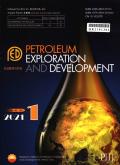Progress in CO2 flooding and storage techniques for lacustrine oil reservoirs and development directions of their large-scale application in China
IF 8
Q1 ENERGY & FUELS
引用次数: 0
Abstract
Based on the technological demands for significantly enhancing oil recovery and long-term CO2 sequestration in the lacustrine oil reservoirs of China, this study systematically reviews the progress and practices of CO2 flooding and storage technologies in recent years. It addresses the key technological needs and challenges faced in scaling up the application of CO2 flooding and storage to mature, developed oil fields, and analyzes future development directions. During the pilot test phase (2006–2019), continuous development and application practices led to the establishment of the first-generation CO2 flooding and storage technology system for lacustrine reservoirs. In the industrialization phase (since 2020), significant advances and insights have been achieved in terms of confined phase behavior, storage mechanisms, reservoir engineering, sweep control, engineering process and storage monitoring, enabling the maturation of the second-generation CO2 flooding and storage theories and technologies to effectively support the demonstration projects of Carbon Capture, Utilization and Storage (CCUS). To overcome key technical issues such as low miscibility, difficulty in gas channeling control, high process requirements, limited application scenarios, and coordination challenges in CO2 flooding and storage, and to support the large-scale application of CCUS, it is necessary to strengthen research on key technologies for establishing the third-generation CO2 flooding and storage technological system incorporating miscibility enhancement and transformation, comprehensive regulation for sweep enhancement, whole-process engineering techniques and equipment, long-term storage monitoring safety, and synergistic optimization of flooding and storage.
中国湖相油藏CO2驱储技术进展及大规模应用的发展方向
基于中国湖相油藏显著提高采收率和长期封存CO2的技术需求,系统综述了近年来CO2驱油封存技术的进展与实践。阐述了二氧化碳驱储技术在成熟开发油田推广应用的关键技术需求和面临的挑战,并分析了未来的发展方向。在中试阶段(2006-2019年),通过不断的开发和应用实践,建立了第一代湖相油藏CO2驱储技术体系。工业化阶段(2020年以来),在限相行为、封存机制、油藏工程、扫控、工程过程和封存监测等方面取得了重大进展和见解,使第二代CO2驱积理论和技术日趋成熟,能够有效支撑碳捕集利用与封存(CCUS)示范项目。为克服CO2驱储中存在的混相低、气窜控制困难、工艺要求高、应用场景有限、协同性难等关键技术问题,支持CCUS的大规模应用,需要加强对建立包含混相增强与改造的第三代CO2驱储技术体系的关键技术研究。加强扫水综合调控、全过程工程技术装备、长期储水监测安全、防洪储水协同优化。
本文章由计算机程序翻译,如有差异,请以英文原文为准。
求助全文
约1分钟内获得全文
求助全文

 求助内容:
求助内容: 应助结果提醒方式:
应助结果提醒方式:


